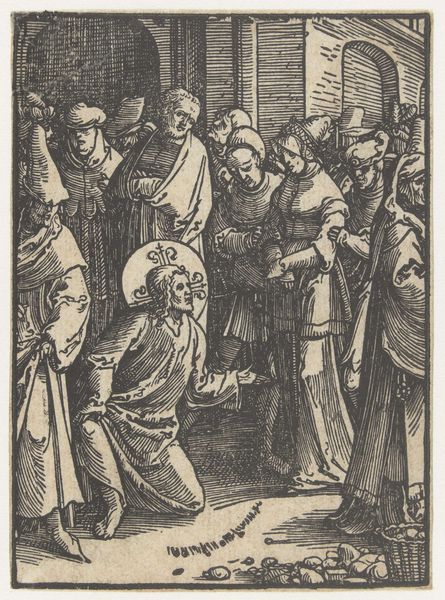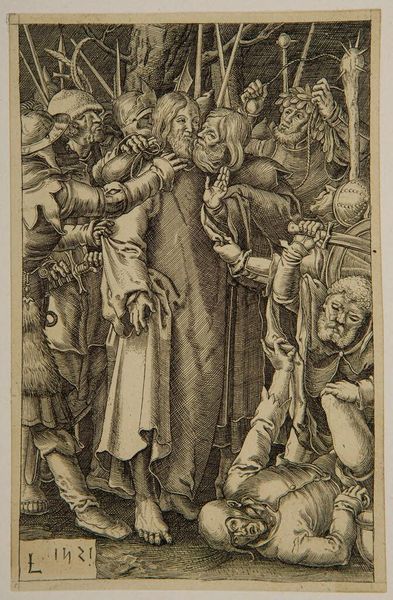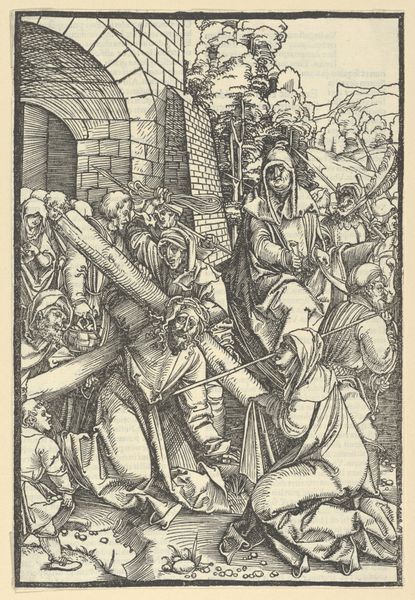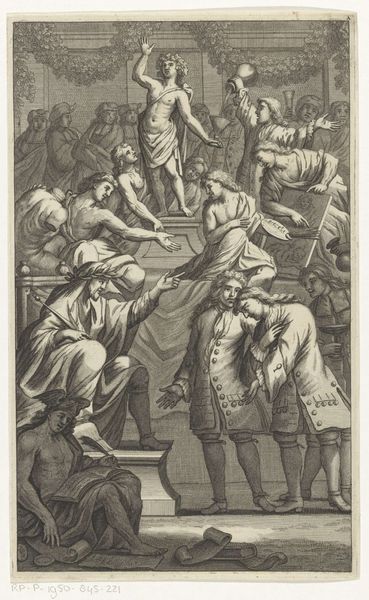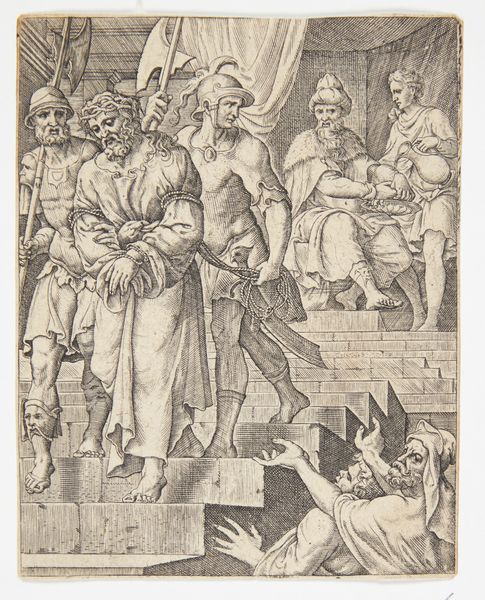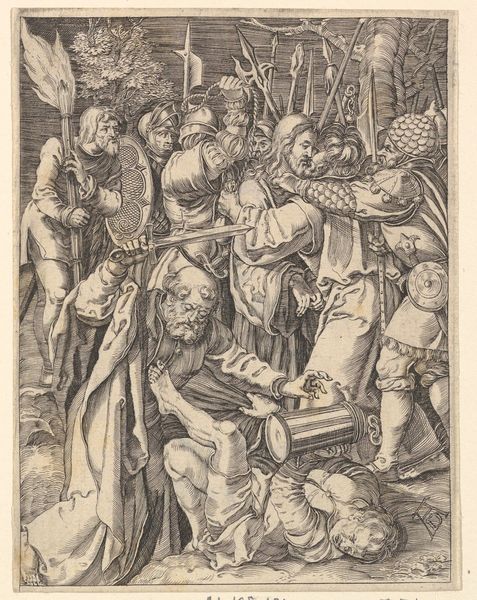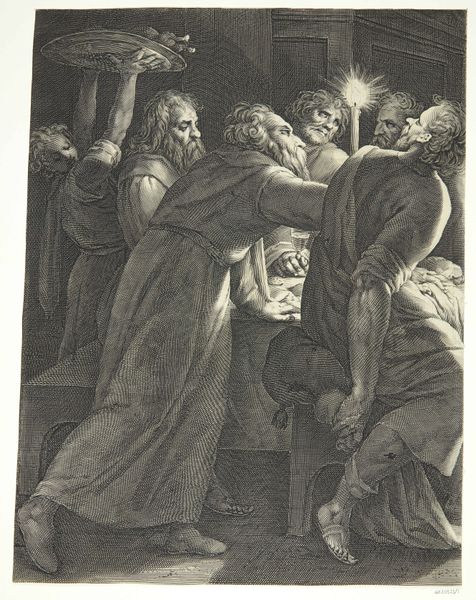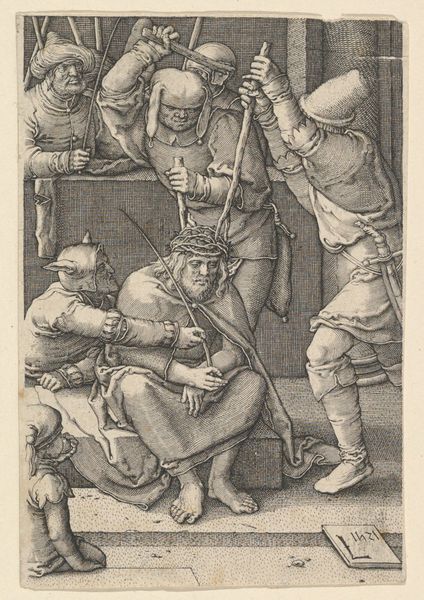
print, engraving
# print
#
figuration
#
history-painting
#
northern-renaissance
#
engraving
Dimensions: height 116 mm, width 77 mm
Copyright: Rijks Museum: Open Domain
Curator: Lucas van Leyden's engraving, "The Arrest of Christ," created in 1521, currently resides here at the Rijksmuseum. Editor: What strikes me immediately is the tension. The entire composition feels claustrophobic, and chaotic despite being captured in such fine detail. It's… violent, almost viscerally so. Curator: Absolutely. Van Leyden masterfully depicts the moment of betrayal in the Garden of Gethsemane. Consider the socio-political climate of the early 16th century. The Reformation was gaining momentum, and art became a battleground for ideological expression. How does this scene of capture resonate within the power dynamics of the time? Is it a comment on religious authority, justice, and the vulnerability of the accused? Editor: Well, let’s break down some of the imagery. The kiss itself is the central symbolic act here; a sign of love twisted into betrayal. Look at Judas's face - there's a subtle internal conflict visible, an inner turmoil amidst the act. The surrounding figures, armed and armored, reinforce that oppressive feeling, each face contorted, embodying an irrational groupthink. The Northern Renaissance masters were brilliant at portraying symbolic emotion, no? Curator: I concur; observe the fallen figure in the lower right. A figure already prostrate. This detail speaks to the abject position of Christ’s followers—they have already fallen due to fear or persecution, thus representing the crumbling base that supports this religious movement. Editor: Also, it’s the tiny details! Did you notice how van Leyden renders the texture of fabrics, the gleam of the armor, each expression of fear or aggression? The spears pointing inward focus the view, they create an aggressive frame around Christ's figure... It almost feels as if they imprison the whole story inside the paper. Curator: True, and perhaps van Leyden deliberately chooses the medium of print, as this decision enabled broader accessibility to images for didactic or polemic purposes. It makes this historical moment very contemporary in its discourse. Editor: Yes, I agree. This image feels eternally relevant and points to that ever-changing dialectic of faith and oppression. A great rendering, by all accounts!
Comments
No comments
Be the first to comment and join the conversation on the ultimate creative platform.
